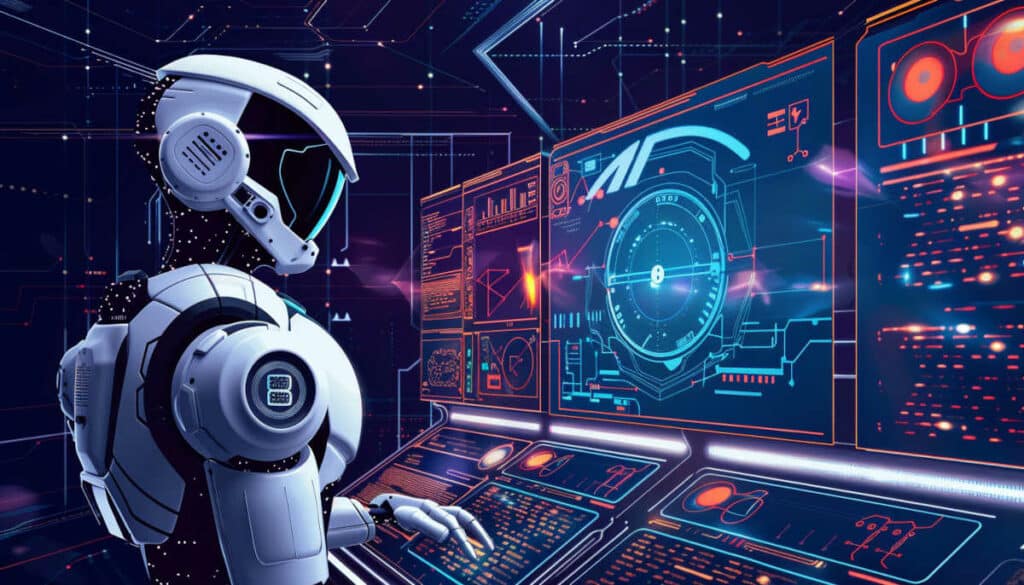Next-Generation Cybersecurity: How AI is Reshaping Digital Defense in 2025
In an era where digital threats evolve at lightning speed, traditional cybersecurity approaches are no longer sufficient. AI-powered security solutions have moved from experimental to essential, fundamentally changing how organizations protect their digital assets.
The Evolution of Cyber Threats
Today’s threat landscape is characterized by:
- Advanced persistent threats (APTs) that can remain undetected for months
- AI-powered attacks that adapt to defensive measures in real-time
- Supply chain vulnerabilities affecting entire ecosystems
- Quantum computing threats on the horizon
“We’re seeing attack sophistication that would have been unimaginable just three years ago,” notes Dr. Elena Kapoor, Chief Security Researcher at QuantumShield. “Attackers are using the same AI tools that defenders have access to.”
How AI is Transforming Defense Strategies
1. Predictive Threat Intelligence
Modern AI systems can identify potential threats before they materialize by:
- Analyzing global threat data across millions of endpoints
- Recognizing subtle patterns that human analysts would miss
- Predicting new attack vectors based on emerging technologies
2. Behavioral Analysis and Anomaly Detection
Rather than relying on signatures of known threats, AI security platforms establish baselines of normal behavior and flag deviations:
# Simplified example of behavior-based anomaly detection
def detect_anomalies(user_actions, baseline_model):
risk_score = baseline_model.compare(user_actions)
if risk_score > THRESHOLD:
trigger_investigation(user_actions, risk_score)
This approach is particularly effective against zero-day exploits and insider threats.
3. Autonomous Response Systems
When threats are detected, AI can respond in milliseconds:
- Isolating affected systems
- Patching vulnerabilities
- Re-routing traffic
- Deploying countermeasures
“The mean time to respond has dropped from hours to seconds,” explains Marcus Chen, CISO at TechGlobal. “That’s the difference between containing a breach to a single endpoint versus dealing with enterprise-wide damage.”
4. Continuous Authentication
Static passwords are increasingly obsolete. AI enables:
- Continuous biometric verification (typing patterns, facial recognition)
- Behavioral biometrics that authenticate based on how users interact with systems
- Context-aware access controls that adapt to risk levels
The Rise of Zero-Trust Architecture
AI has made zero-trust security models practically implementable at scale. These systems:
- Verify every user and device continuously
- Grant least-privilege access based on contextual factors
- Make authentication decisions using hundreds of signals
“Trust nothing, verify everything—but make it seamless for legitimate users. That’s what AI enables.” — Cybersecurity Framework 2025
Quantum-Resistant Security
As quantum computing advances, AI is already helping organizations prepare:
- Identifying systems vulnerable to quantum attacks
- Implementing post-quantum cryptographic algorithms
- Simulating quantum attacks against current defenses
Human-AI Security Teams
Despite automation advances, the most effective cybersecurity approach combines human expertise with AI capabilities:
- AI handles routine monitoring and first-level response
- Human analysts focus on strategic decisions and complex threats
- Continuous learning systems bridge the knowledge gap
Implementing Next-Gen Security in Your Organization
- Assess your current security posture against AI-ready frameworks
- Start small with targeted AI implementations in high-value areas
- Upskill your team to work effectively with AI security tools
- Develop clear policies for AI-human collaboration in security operations
- Measure effectiveness beyond traditional metrics
The Road Ahead
As we move deeper into 2025, the integration of AI into cybersecurity will only accelerate. Organizations that embrace this shift will find themselves not only more secure but also more efficient, freeing human talent to focus on innovation rather than routine threat management.
The future of cybersecurity isn’t just about better tools—it’s about fundamentally reimagining the relationship between humans, machines, and security in an increasingly complex digital ecosystem.
What cybersecurity challenges is your organization facing? Share your experiences in the comments below.

